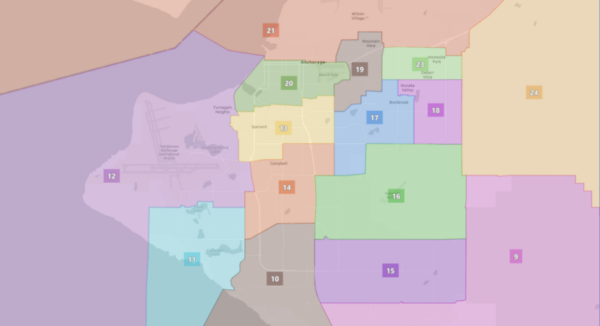
The Alaska Redistricting Board adopted a new map for the Alaska House of Representatives districts on Friday.
The board voted 4–1 in favor of the map.
The map is based on last year’s U.S. census. It could affect who controls the House for the next decade.
Board member Nicole Borromeo drew the Anchorage portion of the map. She said she aimed to draw compact districts while staying within legal limits for population differences.
“The Supreme Court has said: ‘Focus on compactness and contiguity,’ and, then, other things as well,” she said.
Borromeo was appointed by former Alaska House Speaker Bryce Edgmon, a Dillingham independent.
Board member E. Budd Simpson voted for Borromeo’s Anchorage proposal rather than an alternative proposed by board member Bethany Marcum. Simpson and Marcum are Gov. Mike Dunleavy’s appointees to the board.
Simpson said the benefits of more compact districts in the final map make it more likely to withstand a legal challenge than Marcum’s proposal.
“The districts are kind of more square and (have) fewer odd corners and things like that,” he said.
Marcum was the only member to vote against the final map.
“There are parts of this map that I think are very good. But in all good conscience, I know there are parts that are not the best that they could be,” she said.
Several members of the public criticized the adopted map for including the Goldstream area in a rural Interior district, rather than a district based around Fairbanks.
The board plans to determine which House districts will be paired to form Senate districts on Monday. It also must decide which Senate districts that held elections last year must hold new elections next year because their boundaries have changed too much. Senate terms usually are four years, with half of the seats up for election every two years.
The board must finish its work by Wednesday.
[Sign up for Alaska Public Media’s daily newsletter to get our top stories delivered to your inbox.]
Andrew Kitchenman is the state government and politics reporter for Alaska Public Media and KTOO in Juneau. Reach him at akitchenman@alaskapublic.org.




